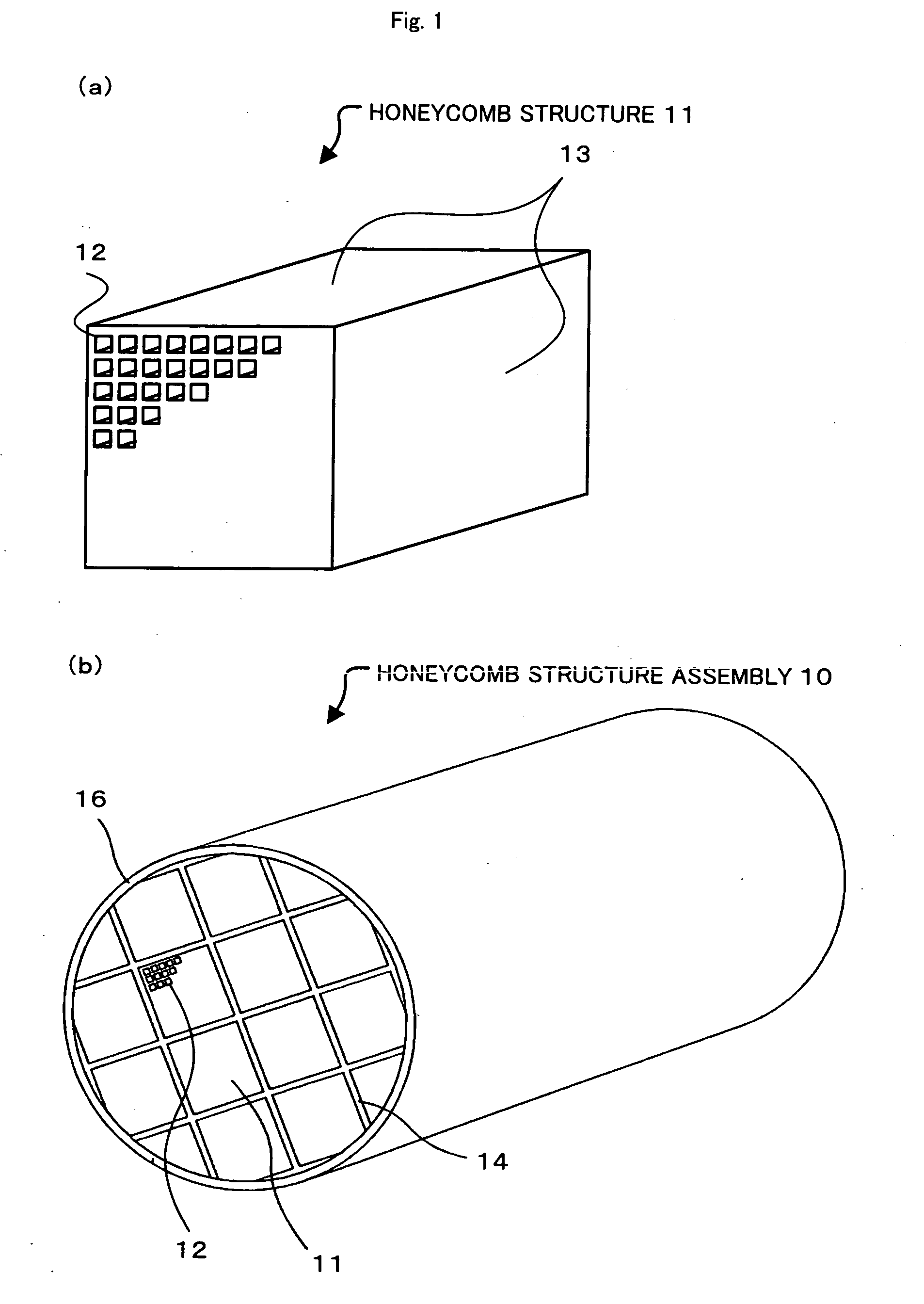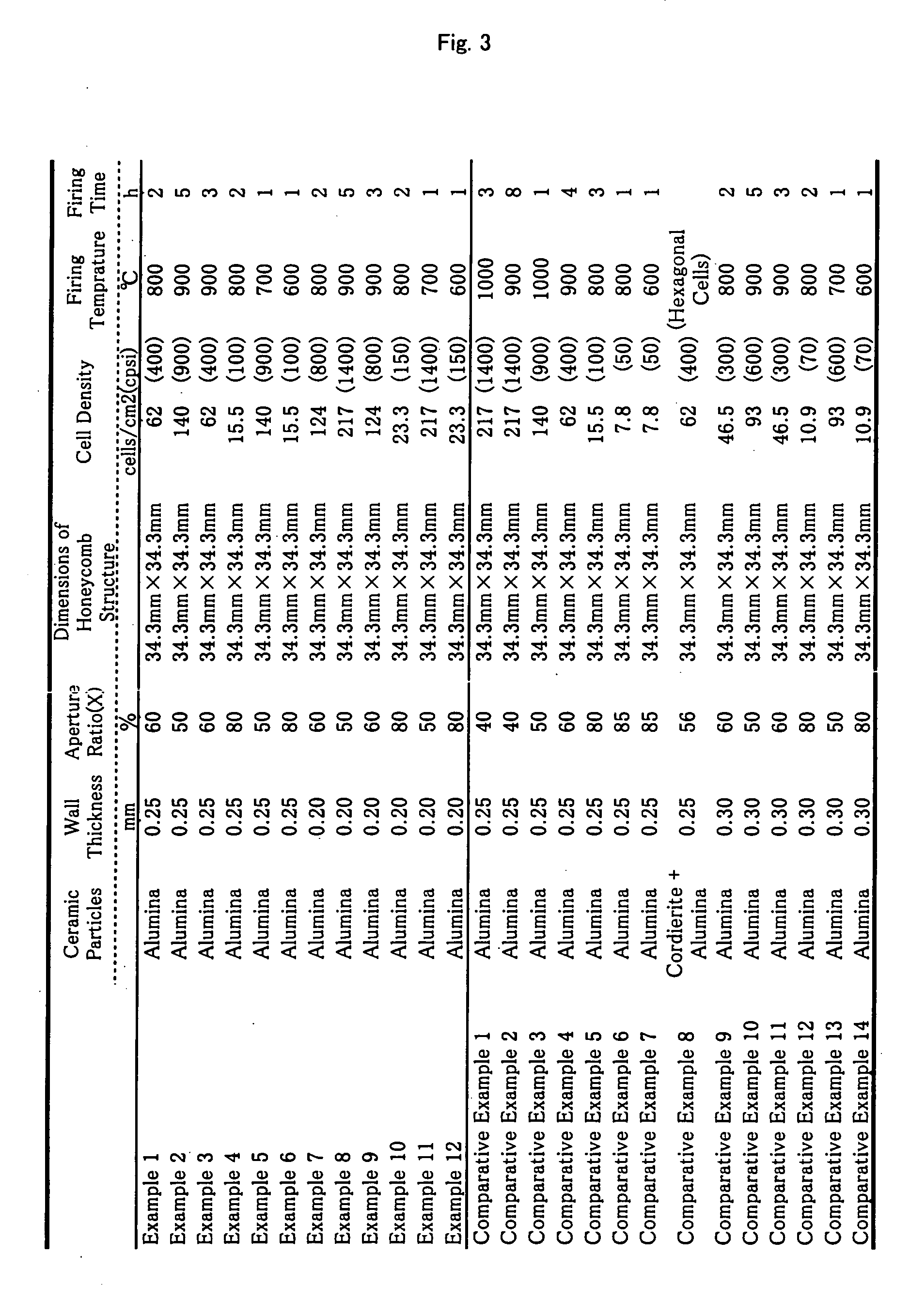Honeycomb structure, honeycomb structure assembly, and honeycomb catalyst
a technology of honeycomb and structure, applied in the direction of catalyst carriers, physical/chemical process catalysts, separation processes, etc., can solve the problems of unsignificant increase in contact potential, unsatisfactory heightening of pressure loss, and increase of alumina layer thickness, etc., to achieve efficient conversion of exhaust gas
- Summary
- Abstract
- Description
- Claims
- Application Information
AI Technical Summary
Benefits of technology
Problems solved by technology
Method used
Image
Examples
example 1
[0048] The process of Example 1 mixed 40% by weight of γ-alumina particles (average particle diameter: 2 μm), 10% by weight of silica alumina fibers (average fiber diameter: 10 μm, average fiber length: 100 μm), and 50% by weight of silica sol (solid content: 30% by weight) to give a mixture. The process added 6 parts by weight of methylcellulose as an organic binder and small amounts of a plasticizer and a lubricant with stirring to 100 parts by weight of the mixture and sufficiently kneaded the whole mixed composition. The mixed composition was extrusion molded by an extruder to a raw molded object. The raw molded object was sufficiently dried with a microwave dryer and a hot air dryer and was kept at 400° C. for 2 hours for degreasing. The degreased molded object was fired at 800° C. for 2 hours to give a square-pillar honeycomb structure (34.3 mm×34.3 mm×150 mm) having a cell density of 62 cells / cm2 (400 cpsi) and a wall thickness of 0.25 mm.
[0049] The honeycomb structure thus ...
example 2 to 12
[0050] Honeycomb structures of Examples 2 to 12 having wall thicknesses, aperture ratios, and cell densities shown in the table of FIG. 3 were obtained from the same starting materials mixed at the same mixing ratio as those of Example 1 by the same procedure as Example 1 under respective preparation conditions shown in the table of FIG. 3. These honeycomb structures were treated by the same procedure as Example 1 to carry the catalyst component thereon. This gave honeycomb catalysts of Examples 2 to 12.
PUM
| Property | Measurement | Unit |
|---|---|---|
| Percent by mass | aaaaa | aaaaa |
| Percent by mass | aaaaa | aaaaa |
| Thickness | aaaaa | aaaaa |
Abstract
Description
Claims
Application Information
 Login to View More
Login to View More - R&D
- Intellectual Property
- Life Sciences
- Materials
- Tech Scout
- Unparalleled Data Quality
- Higher Quality Content
- 60% Fewer Hallucinations
Browse by: Latest US Patents, China's latest patents, Technical Efficacy Thesaurus, Application Domain, Technology Topic, Popular Technical Reports.
© 2025 PatSnap. All rights reserved.Legal|Privacy policy|Modern Slavery Act Transparency Statement|Sitemap|About US| Contact US: help@patsnap.com



